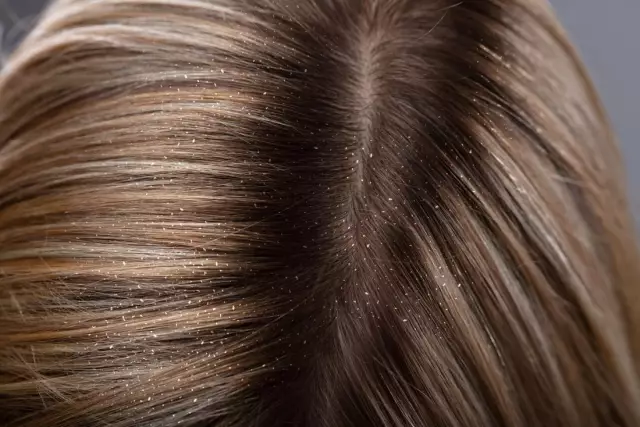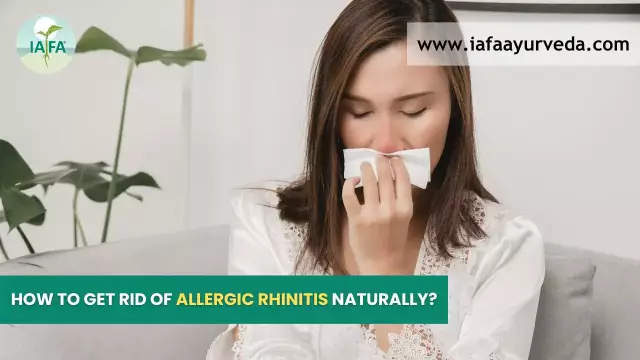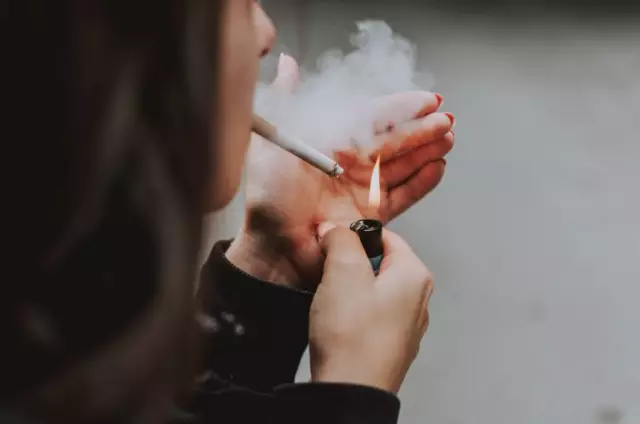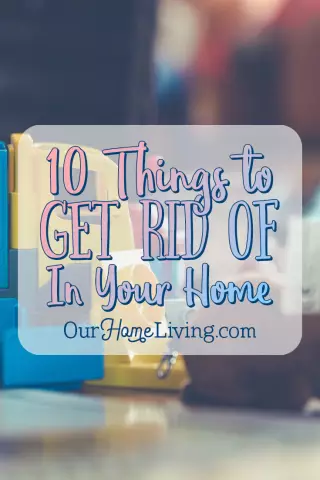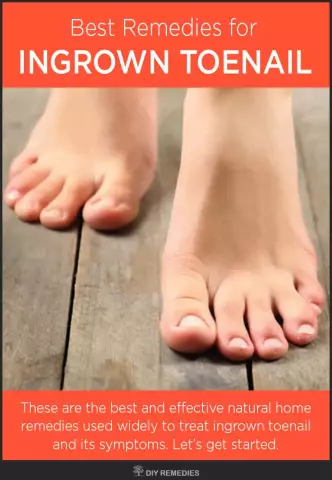- Author Rachel Wainwright [email protected].
- Public 2023-12-15 07:39.
- Last modified 2025-11-02 20:14.
Nits - how to get rid of?

Lice are a suborder of small obligate highly specialized parasites of the order of the chewing lice, which reproduce by eggs (nits). The habitat of lice is human hair.
Nits are teardrop-shaped, flattened lice eggs, covered with a protective shell, reaching 1 mm in length. The nits are attached at the base of the hair with a sticky substance produced by the lice. The nit is a roundish oblong white or yellowish egg. The ripening period of nits ranges from 5 to 16 days, depending on the temperature regime. Under unfavorable conditions, the maturation period of nits can last up to 6 weeks. Outside the host's body, lice and nits are able to live for 1-2 days at a temperature of 35 C. At a low temperature (up to 20 C), this period increases to 7 days. The optimum temperature for the maturation of nits is 26 - 28 C.
The life cycle of a female louse is 34 - 38 days. During this period, one individual is able to lay up to 200 nits. On the 15th day of the life cycle, the female louse is already capable of laying nits.
Lice feed on the host's blood and lymph by piercing the skin and injecting saliva into the wound. The lice salivary glands are highly developed. It is the saliva of the louse, getting on the skin and into the wound, that causes the characteristic itching when bitten. Lice are guided by the sense of smell.
Lice and nits are the causative agents of diseases such as head lice. Pediculosis - entomosis (a disease caused by insects), characterized by damage to the scalp with typical severe itching at the site of lice bites. Pediculosis is diagnosed during a visual examination of the patient using a Wood lamp (live nits, unlike non-viable individuals, give a pearly white glow). As a rule, other laboratory tests are not required in the case of uncomplicated head lice.
Lice and nits symptoms
Speaking about the symptoms of lice and nits, we mean the symptoms of a disease caused by parasites - head lice.
A common symptom of lice and nits is severe itching in the scalp. With the course of the disease, scratches, sores, crusts form on the scalp, contributing to the addition of a secondary infection. In rare cases, patients infected with nits and lice have swelling of the cervical, behind the ear, occipital lymph nodes.
In complex and advanced cases of nits and lice lesions, patients have abundant serous-purulent discharge, which has an unpleasant odor and contributes to the formation of tangles.
Typical symptoms of nits and lice include:
- Irritability, psychological discomfort;
- Severe itching in the area affected by nits;
- Lice bite marks;
- Small swelling and sores, peeling of the skin in the temporal, behind the ear, occipital region of the head;
- Small gray-blue spots on the scalp;
- The presence of nits (white blotches at the hair roots, similar to dandruff);
- The presence of lice.
As a rule, lice and nits are found almost immediately after infection. Due to the defeat of nits and lice, a person's sleep, attention is disturbed, anxiety caused by itching appears.
The causes of lice and nits
The main reason for the appearance of lice and nits in humans is the direct transfer of lice to the head upon contact with a person already infected with nits and lice. There is a misconception that the appearance of nits and lice is promoted by non-compliance with the rules of personal hygiene. In fact, a clean scalp, devoid of sebum, which creates a barrier to lice bites and thus prevents nourishment, is the most favorable environment for nits and lice.
It is believed that people who are constantly under stress are more susceptible to lice infestation.
Nits: risks to human health
Lice, like nits, do not pose a particular danger to humans. As a rule, pediculosis detected at an early stage (when the population of lice, as well as deposited nits is small) responds well to treatment. You can get rid of parasites and nits for one or two applications of special drugs sold in pharmacies. However, lice are carriers of diseases such as relapsing fever and typhus - acute infectious diseases that are transmitted from an infected patient to a healthy person through lice.
Nits are a great danger. Enclosed in a dense protective capsule, nits can survive when treated with special drugs, which will inevitably lead to a relapse of infection.
How to get rid of nits: means and methods
Removing nits and lice is a complex process that requires an integrated approach. In complex clinical cases, accompanied by skin changes, patients are advised to consult a doctor to find out how to get rid of nits. Thanks to their protective shell, nits can survive various treatments, leading to the development of a new population of lice. The doctor will not only recommend how to get rid of lice, but also, based on the clinical picture, prescribe symptomatic treatment to alleviate the patient's condition.
Unlike lice, which are more sensitive to the effects of drugs and die after treatment, nits must be selected manually, for which it is recommended to use a thick metal comb (plastic teeth are more pliable and less effective at combing out nits).

There are traditional and folk remedies on how to get rid of nits. The main difficulty in the process of removing nits is a sticky substance with which the eggs are attached to the hair root. This gum is not soluble with standard anti-lice products, so nits remain firmly adhered to hair even after treatment. To dissolve the sticky substance, it is recommended to use a weak vinegar solution or fresh cranberry juice, with which you need to moisten the hair roots, and then pick the nits by hand.
Remedy for nits: use for the treatment and prevention of disease
Currently, a large selection of over-the-counter nits remedies are available in pharmacies. When choosing an insecticidal agent, you should pay attention to the spectrum of action. Some funds are declared only for the fight against lice, without affecting the nits. The effectiveness of nits does not depend on the form of release. Aerosols, shampoos, ointments, solutions are available to consumers. The choice of the tool depends only on the preference for use.
The main remedies for nits are preparations based on perimetrin, phenotrin, malathion (synthetic insecticides) and pyrethrin (a natural plant-based insecticide).
It should be remembered that the remedies for nits are very toxic, so they must be applied, strictly following the instructions. For prophylaxis, nits should be used by all family members to prevent re-infestation of lice.
Nit repellent should not be used more often than indicated in the instructions to avoid poisoning. Household items (bed linen, towels, combs, clothes, etc.) are also subject to processing.
For the effective removal of nits and lice, it is necessary to re-treat the product after 7 days, which is associated with the life cycle of the parasites.
YouTube video related to the article:
Found a mistake in the text? Select it and press Ctrl + Enter.

